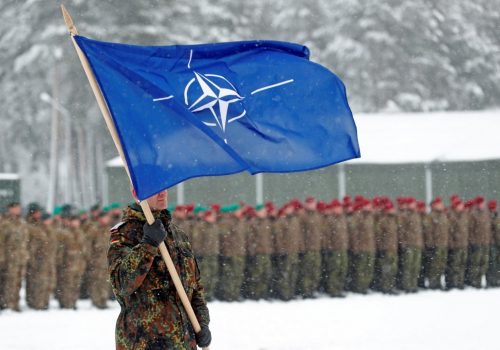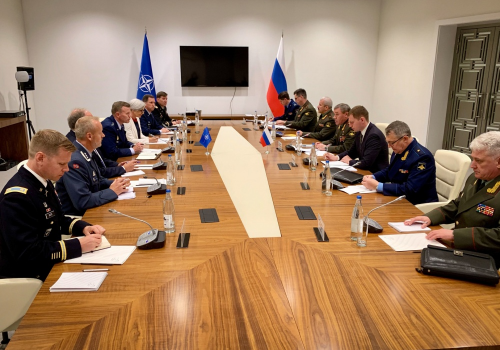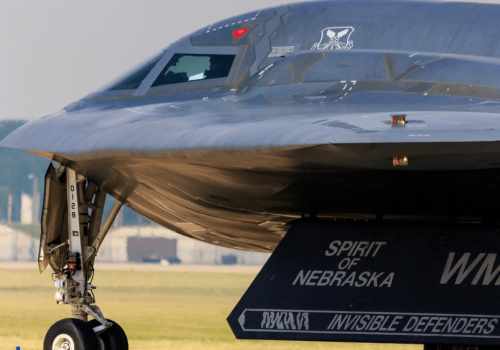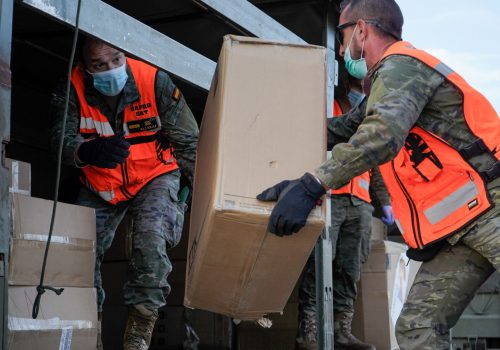Set NATO’s sights on the High North
Sun Tzu, the Chinese military strategist from the sixth century BC, in his classic work The Art of War emphasized the importance of securing the “precipitous heights” before one’s adversary, due to the advantages elevated positions afforded a defending army. There is no “higher ground” on Earth than the Arctic. The Arctic is rapidly changing as it experiences climate change at a rate greater than twice the global average and polar sea ice recedes and thins.1NOAA (National Oceanic and Atmospheric Administration), “The Changing Arctic: A Greener, Warmer and Increasingly Accessible Region,” NOAA, December 15, 2017, https://www.noaa.gov/explainers/changing-arctic-greener-warmer-and-increasingly-accessible-region The first ice-free Arctic summer, under a high-emissions scenario, could occur as soon as 2042.2National Centers for Environmental Information, “Predicting the Future of Arctic Ice,” National Oceanic and Atmospheric Administration, February 28, 2020, https://www.ncei.noaa.gov/news/arctic-ice-study These changes are resulting in increased human activity in the region as global actors explore opportunities to exploit its natural resources and strategic geographic location.
These developments suggest the Arctic is likely to be one of the twenty-first century’s most contested arenas. Yet, NATO lags significantly behind its global competitors, Russia and China, both of which have quickly recognized the economic and security implications of an increasingly ice-free Arctic and have engaged in a long-term effort to enhance their respective positions there. The criticality of the Arctic terrain to the emerging domain of space and acknowledged interdependencies between the two operating spheres—the US Air Force’s Arctic Strategy promises “to develop new technologies and modernize existing assets in the Arctic necessary to ensure access to and freedom to operate in space”—add an additional layer of relevance of the Arctic to the future strategic environment.3Atlantic Council, “North Star: The first Department of the Air Force Arctic strategy,” July 21, 2020, video, 58.31, https://www.atlanticcouncil.org/event/north-star-the-first-department-of-the-air-force-arctic-strategy/ the Department of the Air Force, Arctic Strategy, July 21, 2020, https://www.af.mil/Portals/1/documents/2020SAF/July/ArcticStrategy.pdf
These dynamics, if not properly anticipated and planned for, will increasingly challenge the concept of “Arctic Exceptionalism,” borne of former Soviet leader Mikhail Gorbachev’s call in 1987 that the Arctic be a “zone of peace.”4Soviet leader Mikhail Gorbachev, “Mikhail Gorbachev’s Speech in Murmansk at the Ceremonial Meeting on the Occasion of the Presentation of the Order of Lenin and the Gold Star to the City of Murmansk,” speech in Murmansk, Russia, October 1, 1987, https://www.barentsinfo.fi/docs/Gorbachev_speech.pdf The question, therefore, is not whether NATO should be actively engaged in Arctic issues, but rather what is to be the form of that engagement. The answer to that question needs to be shaped by an accurate understanding of the intentions and operations of NATO’s competitors.
Watch the video
Assessing Russian and Chinese objectives
Russia undertook an ambitious refurbishment and expansion of its Arctic military infrastructure between 2013 and 2017, which was focused on increasing its air assets and air defense footprint. This effort has effectively provided Russia an improved anti-access/area denial (A2/AD) capability encompassing the strategic Northern Sea Route (NSR) across Russia’s northern coast and its bastion of naval operations east of the Kola Peninsula.5Heather A. Conley and Matthew Melino, America’s Arctic Moment: Great Power Competition in the Arctic to 2050, Center for Strategic and International Studies, March 2020, https://csis-website-prod.s3.amazonaws.com/s3fs-public/publication/Conley_ArcticMoment_layout_WEB%20FINAL.pdf?EkVudAlPZnRPLwEdAIPO.GlpyEnNzlN
The NSR, which Russia claims as an internal waterway—a claim the United States and a number of other nations dispute—is central to Moscow’s Arctic economic development strategy. Similarly, the Russian Navy’s bastion defense concept is key to the Kremlin’s nuclear doctrine and the security of Russia’s strategic ballistic missile submarines. While these military improvements have legitimate defensive purposes, they also effectively extend Russian A2/AD capabilities into the strategic North Atlantic chokepoint at the GIUK (Greenland, Iceland, and the United Kingdom) Gap.
Moreover, the revitalization of Russia’s military footprint in the Arctic has been accompanied by increased Russian naval and air patrols in the region, robust Russian submarine activity in the North Atlantic, and the routine use of electronic warfare tactics, such as GPS jamming, against allied forces.
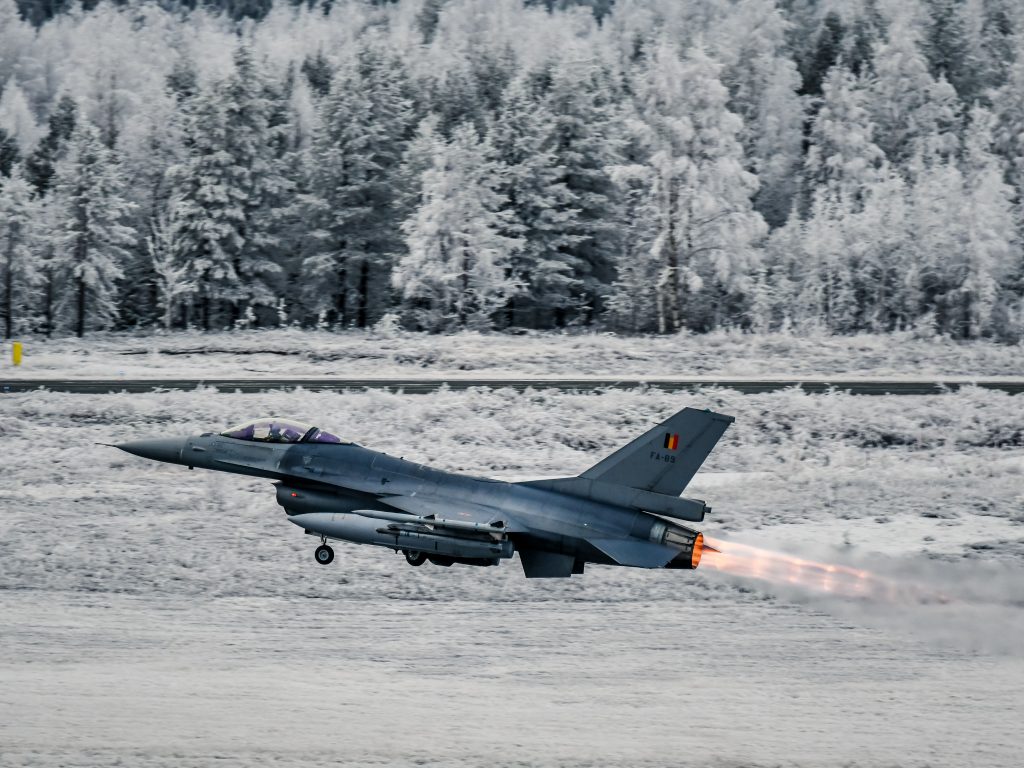
The question, therefore, is not whether NATO should be actively engaged in Arctic issues, but rather what is to be the form of that engagement.
A Belgian F-16 taking off from Rovaniemi Airbase during exercise Trident Juncture 2018.
(Source: NATO Flickr)
China, for its part, has declared itself a “near Arctic state”—a concept that defies meaning. Nevertheless, this self-designation reflects Beijing’s significant interests in the Arctic, including its aspirations to create the Polar Silk Road for commerce through the Arctic as an extension of its Belt and Road Initiative. In service of its Arctic ambitions, China has conducted regional scientific exploration, established research facilities in the High North, and is developing a constellation of twenty-four polar observation satellites, all of which are dual-purposed to provide valuable domain awareness with potential military applications.6Gu Liping, “China’s Polar-Observing Satellite Obtains Over 2,500 Images,” ECNS, September 14, 2020, http://www.ecns.cn/m/news/sci-tech/2020-09-14/detail-ifzzykiy4584353.shtml
A strategy for defense and deterrence in warming waters
While these developments may seem far away and far off to many NATO allies, a Russian A2/AD bubble along the Alliance’s northern flank should be a critical concern for an Alliance with an obligation to defend its Arctic member states. That different Arctic allies have different views on the role NATO should play makes a consensus approach difficult.7Canada has resisted a NATO role, viewing Arctic security as a national issue, while Denmark has been cautious to support NATO activity so as not to disrupt dialogue with Russia. On the other hand, Norway has traditionally favored a prominent role for the Alliance and, alongside the United States, has had some success in reframing Arctic issues as North Atlantic issues. Nevertheless, the absence of an overarching security concept for the Arctic is an obvious and increasingly urgent lacuna for the Alliance. NATO’s Article 5 requirement for collective defense makes it imperative that it take a more active role in confronting actions that jeopardize its ability to protect its member states.
To that end, NATO should develop a comprehensive Arctic strategy that is focused on deterrence of competitors and defense of its member states. This strategy should be one that is sensitive to and accounts for the diverse array of unique Arctic equities, such as environmental issues and the rights of indigenous peoples. Such a strategy would have military, political, and environmental components and should detail approaches for establishing and maintaining a concept for credible deterrence in the Arctic. In the military dimension, specifically, the Alliance should undertake a number of actions to advance the following priorities:
- Build political consensus. As recommended in 2017 by the NATO Parliamentary Assembly’s Political Committee, in order to address Arctic security matters, NATO should establish an Arctic Working Group to settle disagreements on the Alliance’s role in the Arctic. It might also sponsor an Arctic Security Forum for Arctic stakeholders both inside and outside government.
- Enhance domain awareness. Increasing intelligence, surveillance, and reconnaissance operations in the North Atlantic and establishing mechanisms to enhance information sharing on Arctic matters is both necessary and noncontroversial.
- Ensure allies can operate effectively and jointly. There are several avenues for building Arctic competency and interoperability. These include:
- Conducting a feasibility study on the utility of establishing a NATO Joint Force Command for the Arctic or Arctic Command to coordinate NATO military operations in the Arctic region;
- Establishing a specialized NATO Arctic Rapid Reaction Force comprised of air, ground, and maritime assets from Canada, Denmark, Norway, the United Kingdom, the United States, and others capable of responding to both military and humanitarian crises in the region;
- Increasing the frequency and complexity of NATO military exercises, such as Trident Juncture 2018, in the region; and
- Focusing on polar icebreaker capabilities and encouraging Arctic allies to build additional icebreakers to address Russia’s large numerical advantage and China’s in-progress icebreaker program.
- Maintain stability. Establishing an Arctic security dialogue with Russia through the NATO-Russia Council will promote transparency about NATO’s actions in the Arctic and mitigate adverse reactions. Such a dialogue could explore the development of a “military code of conduct” for the Arctic with the goal of reducing the risk of confrontation or miscalculation. This could include advance notification of military exercises as well as routine air and naval activity, in addition to protocols for respecting the region’s biodiversity.
Finding a credible voice
An effective defense and deterrence posture for the Arctic must draw on successful approaches and activities in NATO’s east and south while accounting for the Arctic’s unique, historic disassociation from security issues. To be an accepted and credible actor in the Arctic, NATO must utilize both its political and military tools. It must serve as a bridge between the security community and an array of longstanding Arctic stakeholders which have a vested interest in promoting regional stability and prosperity. For instance, NATO’s credibility will be strengthened by acknowledging the Arctic strategies of indigenous groups and by incorporating their insights on regional trends, including their ideas on habitation and presence that are conducive to longevity.8Aleut International Association, Arctic Athabaskan Council, Gwich’in Council International, Inuit Circumpolar Council, Russian Association of Indigenous Peoples of the North and the Saami Council, “VI Arctic Leaders’ Summit Declaration,” Arctic Leaders’ Summit, Rovaniemi, Finland, November 13-15, 2019, https://static1.squarespace.com/static/58b6de9e414fb54d6c50134e/t/5dea325f7367373ce5087580/1575629412149/Final+ALS6+and+ALYS+Declaration+%28secured%29.pdf NATO must equally account for the importance of efforts such as environmental protection, scientific exploration, and natural resource development.
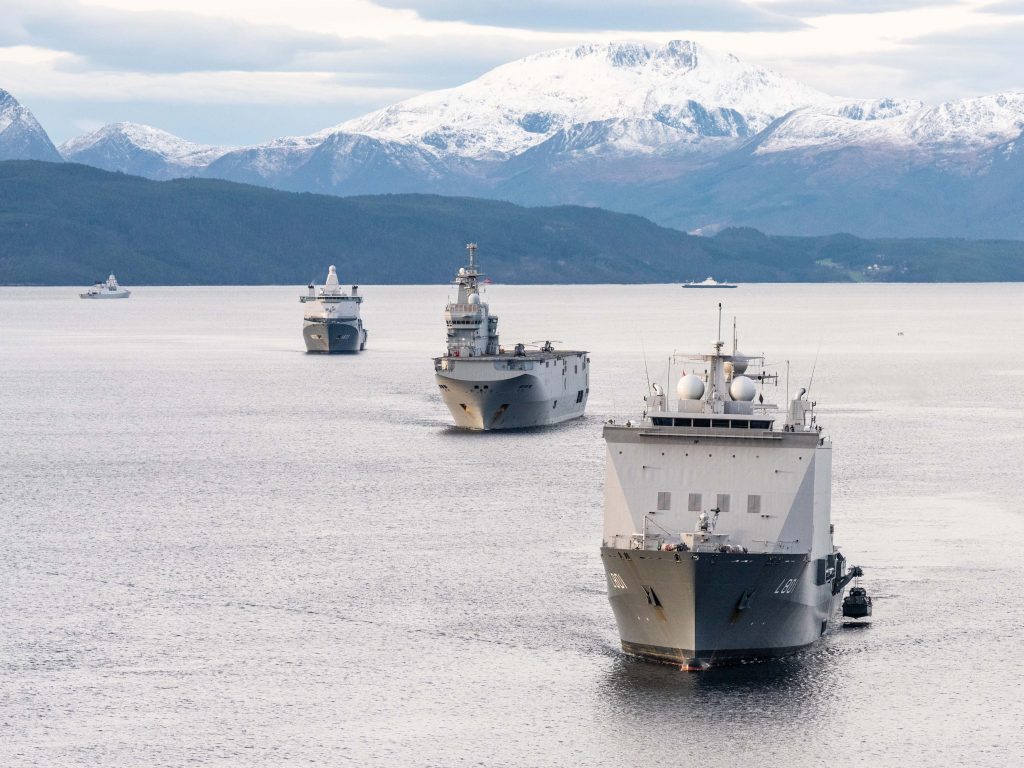
Overall, the growing military-security dimension in Arctic affairs requires NATO to urgently shore up its defense and deterrence posture in the region lest it risk losing relevance and the ability to protect its members.
Vessels from NATO escort an amphibious task group to conduct an amphibious assault during Exercise Trident Juncture 18.
(Source: NATO Flickr)
Even as the changing security environment necessitates ramping up NATO’s role in the Arctic, the Alliance must also respect the unique set of existing Arctic consultative fora, which serve productive purposes and where NATO’s presence would be counterproductive and antithetical to the purpose of keeping Russia, and occasionally China, constructively engaged. Nevertheless, the eventual establishment of a formal Arctic Security Forum where NATO as an institution is an accepted actor should be a long-term goal. To that end, NATO should encourage the development of these talks through a forum such as the Arctic Security Roundtable, held annually at the Munich Security Conference through joint efforts by the Wilson Center and the Norwegian Institute of International Affairs (NUPI). This off-the-record, high-level setting includes China and could be utilized to facilitate a candid Arctic security dialogue geared toward the establishment of a formal security forum.
Overall, the growing military-security dimension in Arctic affairs requires NATO to urgently shore up its defense and deterrence posture in the region lest it risk losing relevance and the ability to protect its members. NATO’s recent agreement to establish operational coordination mechanisms between NATO Maritime Command (MARCOM) and the Danish Joint Arctic Command (JACO), which has responsibility for the defense of Greenland and the Faroe Islands, is a step in the right direction.9NATO, “NATO Begins Cooperation with Danish Joint Arctic Command in Greenland”, October 1, 2020, https://mc.nato.int/media-centre/news/2020/nato-begins-cooperation-with-danish-joint-arctic-command-in-greenland But moving forward comprehensively will require the Alliance to navigate the complex and politically sensitive interlocking relationships among existing Arctic stakeholders. To do this successfully, NATO needs a carefully planned Arctic strategy that can forge consensus among Arctic allies around specific military activities that guarantee access to the region in any circumstance. The time is now for NATO to be an Arctic actor.
* * *
Jim Danoy is a nonresident senior fellow in the Atlantic Council’s Scowcroft Center for Strategy and Security and served as the national intelligence manager for Europe and NATO at the Office of the Director of National Intelligence and as a President’s Daily Brief (PDB) briefer to the 44th President of the United States.
Marisol Maddox is an Arctic analyst at the Woodrow Wilson Center’s Polar Institute, and a non-resident research fellow with the Center for Climate & Security.
Explore the podcast series
Related NATO 20/2020 essays
Related program

The Transatlantic Security Initiative, in the Scowcroft Center for Strategy and Security, shapes and influences the debate on the greatest security challenges facing the North Atlantic Alliance and its key partners.
Subscribe for events and publications on transatlantic security
Sign up for updates from the Atlantic Council’s Transatlantic Security Initiative, covering the debate on the greatest security challenges facing the North Atlantic Alliance and its key partners.
Image: The Blue Ridge-class command and control ship USS Mount Whitney (LCC 20) is moored under northern lights in Trondheim, Norway, Nov 4, 2018. (Source: NATO Flickr)
